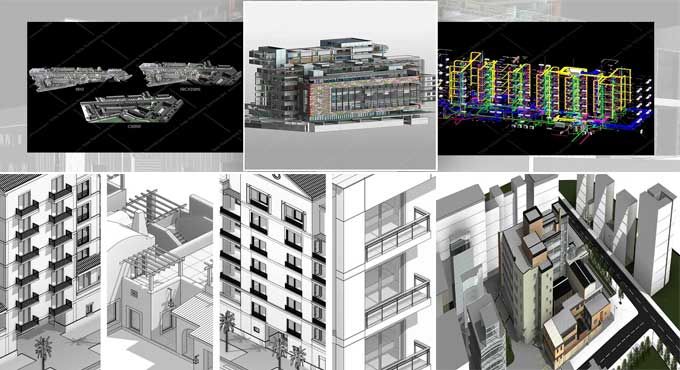BIM Portfolio Tips that are valuable for your career up ahead
Tweet
In the past decades, we have noticed the rise of BIM markets and their influence all over the world as it offers many potential benefits to the AEC industries. The demand for BIM professionals is also high, but supplies are low, so salaries are excellent and career opportunities are plentiful.
It is not surprising that many fresh graduates and even experienced industry professionals are planning to venture into the BIM industry.
This is due to the fact that BIM offers higher salaries, greater job flexibility, and a wide range of opportunities for growth. Moreover, BIM is a rapidly growing field that requires innovative problem-solving and technical skills.
Why a strong Portfolio is important?
If you want to pursue a career in BIM, there are a few things to keep in mind, portfolios included. Portfolios are a must for BIM employment, just like they are for all other design and construction professionals.
The skills and expertise required for each professional function and career opportunity in the vast subject of BIM vary. In order to understand what is required for both the portfolios and future interviews, you should also review the job description and requirements.
Even while portfolio needs may vary from company to company, they will have similar characteristics. Be knowledgeable enough in your profession to compete with the fierce rivalries, and don't forget to showcase your abilities in your portfolios.
Portfolio creation tips for BIM companies
Here are a few tips for the creation of your portfolio for BIM companies:-
Creating the portfolio
Start building your portfolio by preserving and documenting your drawings and models, just like architects do. Keep all the projects you've completed for clients or in BIM certification training for your portfolio.
Keep a record of your duties, roles, and responsibilities in the BIM projects even if it's likely you won't be permitted to access the models because they give an insight into your expertise and understanding of BIM processes.
Kinds of content to add to your portfolio
Determining the type of projects is rather simple for recent graduates; often, they are academic projects or projects from a BIM course.
The focus here, as opposed to an architectural portfolio, will be on BIM models made with BIM tools like Revit and Navisworks. That goes beyond modeling. All of the project pictures and data should highlight your understanding of BIM procedures.
Knowing how to use more than one BIM program, such as Revit, Blender, or Autodesk, is something else you may add and can be an effective choice. By doing so, you demonstrate your proficiency in both computational design and BIM.
Highlight well your BIM skill sets
Your BIM portfolio's material should best demonstrate your BIM skill set such that the BIM 3D models and a few technical drawings serve as the primary content. The material should demonstrate your proficiency in design, construction, and site management in addition to your BIM skills.
Similar to a typical architectural portfolio, the material should blend projects and photographs to demonstrate the variety of the applicant's talents, including both soft and physical skills. Your portfolio may be used to emphasize your hobbies in addition to your skills.
Add necessary soft skills
Soft skills can be challenging to depict in a portfolio; one inventive solution is to use symbols to represent the talents you used in a project. Many graduates are unable to grasp the significance of these abilities, and even BIM positions are crucial prerequisites for every career.
As a BIM coordinator or manager, you will also be responsible for leading the BIM team and collaborating with other design and engineering experts.
Both technical and aesthetic components must be balanced
Have a good balance of complicated technical and aesthetically pleasing components. You may demonstrate that you have the necessary skill set by displaying intricate models and drawings. Here are some things to keep in mind while using BIM models:-
1. First of all, since BIM models contain information integrated into them, you cannot compare them to simple 3D models.
2. Another issue is that you have no idea what project you will be working on. Even massive initiatives are possible in big businesses.
Complicated models are those that have complex geometry or scope. Together with the restrictions and the solutions, it is a good idea to add any difficulties you experience in the workflow.
Also, since understanding structural and MEP components is crucial for BIM specialists, 3D BIM models should include them as well.
Portfolio creation mistakes to avoid
These are a few things you should consider not putting in your Portfolios:-
To get online demonstration, watch the following video tutorial.
Video Source: Phyzital Shikshak
1. It's not a good idea to include all of your work in your portfolios.
2. To make your portfolios appear more appealing, you must constantly arrange your best five BIM projects from throughout your career in a methodical manner.
3. Try to keep your portfolios looking straightforward and concise without using a lot of charts and graphics.
4. Also, keep in mind that the viewer's attention should remain on the BIM deliverables at all times.

Gallery
Feel free to contact us for BIM requirements. One of our representative will respond you within 24 Hours. Send us your projects requirement today and grow your project.
Explore More !







